Li Time LiFePO4, no frills, serious value
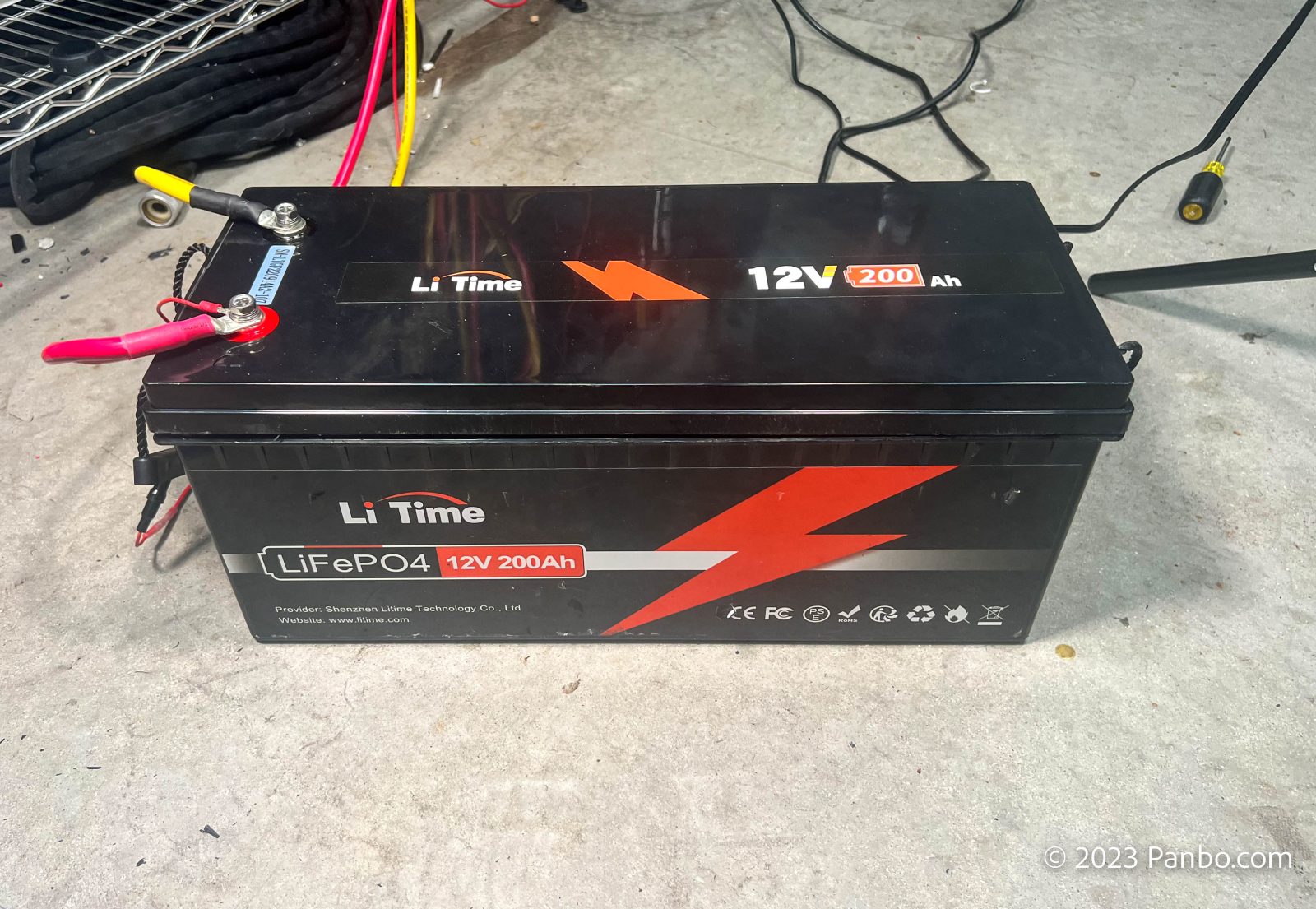
My recent reviews of LiFePO4 batteries have focused on fully featured batteries with heating, Bluetooth, and CANBus communications, and even supercapacitors for engine starting. This time, I’m focusing on a battery that delivers raw value and no frills. Li Time batteries are all about delivering maximum energy storage for the smallest price. Although their batteries may lack the features of fancier batteries, they deliver the most amp hours for the fewest dollars. But how do they perform? Let’s find out.
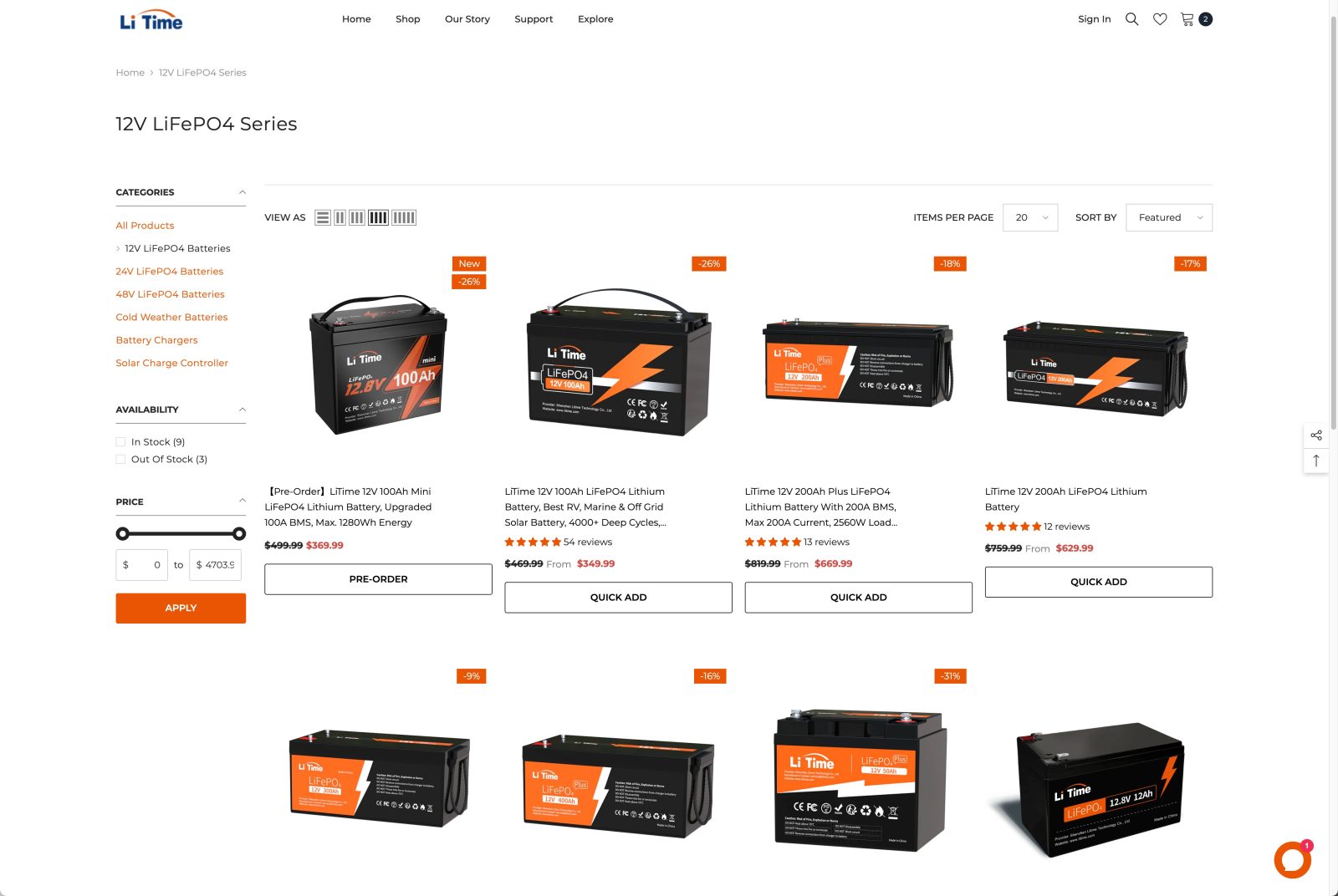
I’m testing a 200 amp hour, 12-volt battery that currently retails for $629.00. My test battery has a 100 amp BMS, so it can deliver 100 amps of current continuously and up to 200 amps for 5 seconds. Li Time has several different configurations in varying sizes. In the 200 amp hour size, they also offer a battery with a heater and low-temperature protection and a battery with a 200 amp BMS and low-temperature protection, but no heater.
Also, if these batteries look familiar but something seems off about the name, Li Time recently rebranded from Ampere Time. I liked Ampere Time, but I suspect Li Time gets the point across a little more directly.
I’ve just wrapped up a review of Epoch’s elegant, well-built, and fully-featured battery, so this is a change of pace. But, I’m pleased and relieved to find a value-focused battery that is still able to deliver on LiFePO4’s promise safely. Although Li Time offers a range of batteries, some with Bluetooth external communications, heating, and more, the 200 amp-hour, 12-volt battery I’ve been reviewing is their most affordable battery without advanced features.
LiFePO4’s benefits at a lead-acid price point
| Battery | Chemistry | Ah Capacity | Cost | $/watt-hour | $/useable watt-hour |
| 2 – Duracell FLA GC2 6-volt | FLA | 215 | $217.96 | $0.08 | $0.17 |
| Li Time 12v 200 ah | LiFePO4 | 200 | $629.00 | $0.25 | $0.31 |
| Duracell G31 AGM | LA-AGM | 110 | $214.32 | $0.16 | $0.32 |
| Li Time 12v 200ah + (200a BMS) | LiFePO4 | 200 | $669.99 | $0.26 | $0.33 |
| Li Time 12v 300ah | LiFePO4 | 300 | $1,039.99 | $0.27 | $0.34 |
| Li Time 12v 100ah | LiFePO4 | 100 | $349.00 | $0.27 | $0.34 |
| 2 – Duracell AGM GC2 6-volt | LA-AGM | 190 | $435.44 | $0.19 | $0.38 |
| Li Time 12v 400ah | LiFePO4 | 400 | $1,599.99 | $0.31 | $0.39 |
| Epoch 12v 100ah | LiFePO4 | 100 | $599.00 | $0.47 | $0.58 |
| KiloVault HLX+ 3600 | LiFePO4 | 300 | $1,895.00 | $0.49 | $0.62 |
| KiloVault HLX+ 2400 | LiFePO4 | 200 | $1,345.00 | $0.53 | $0.66 |
| Battle Born 12v 100ah | LiFePO4 | 100 | $874.00 | $0.68 | $0.85 |
| West Marine Group 31 Gel Deep Cycle | LA-Gel | 97 | $509.99 | $0.44 | $0.88 |
| Odyssey Extreme G34 | LA-TPPL | 68 | $395.99 | $0.49 | $0.97 |
I’ve written plenty about LiFePO4’s affordability. I dedicated an entire article to the math behind comparing LFP to lead acid to help understand — and let’s be honest, justify — the expense of lithium chemistries. My KiloVault HLX+ review included a table detailing the cost per watt-hour of several LFP batteries at the time. That article showed KiloVault’s HLX+ 3600 as the clear leader at $0.56 per kilowatt hour. At the time, I thought that was a bargain and I still don’t think it sounds too bad. But the Li Time battery’s math comes out at under half the cost or less than $0.25 per kilowatt hour. That’s a massive difference! So, I’ve updated that table above.
Although these batteries lack some advanced features, they deliver on the core goodness of LiFePO4. That includes benefits like a flat voltage curve and massive charge acceptance. That flat voltage curve means that even under heavy loads or as the batteries get low on charge, they continue to deliver steady and stable voltage. That steady voltage results in happier electronics, less dimming of lights under load, and a generally happier DC system.
LFP’s charge acceptance means the batteries can be charged faster than equivalent capacity lead-acid batteries. That’s especially true as the batteries pass 80-percent state of charge (SOC). But that massive charge acceptance also contributes to the need to revisit your DC system when you move to LiFePO4. Without attention to protecting your alternators, the batteries’ ability to accept huge charge current can lead to the untimely, heat-soaked death of your alternator.
Using the battery
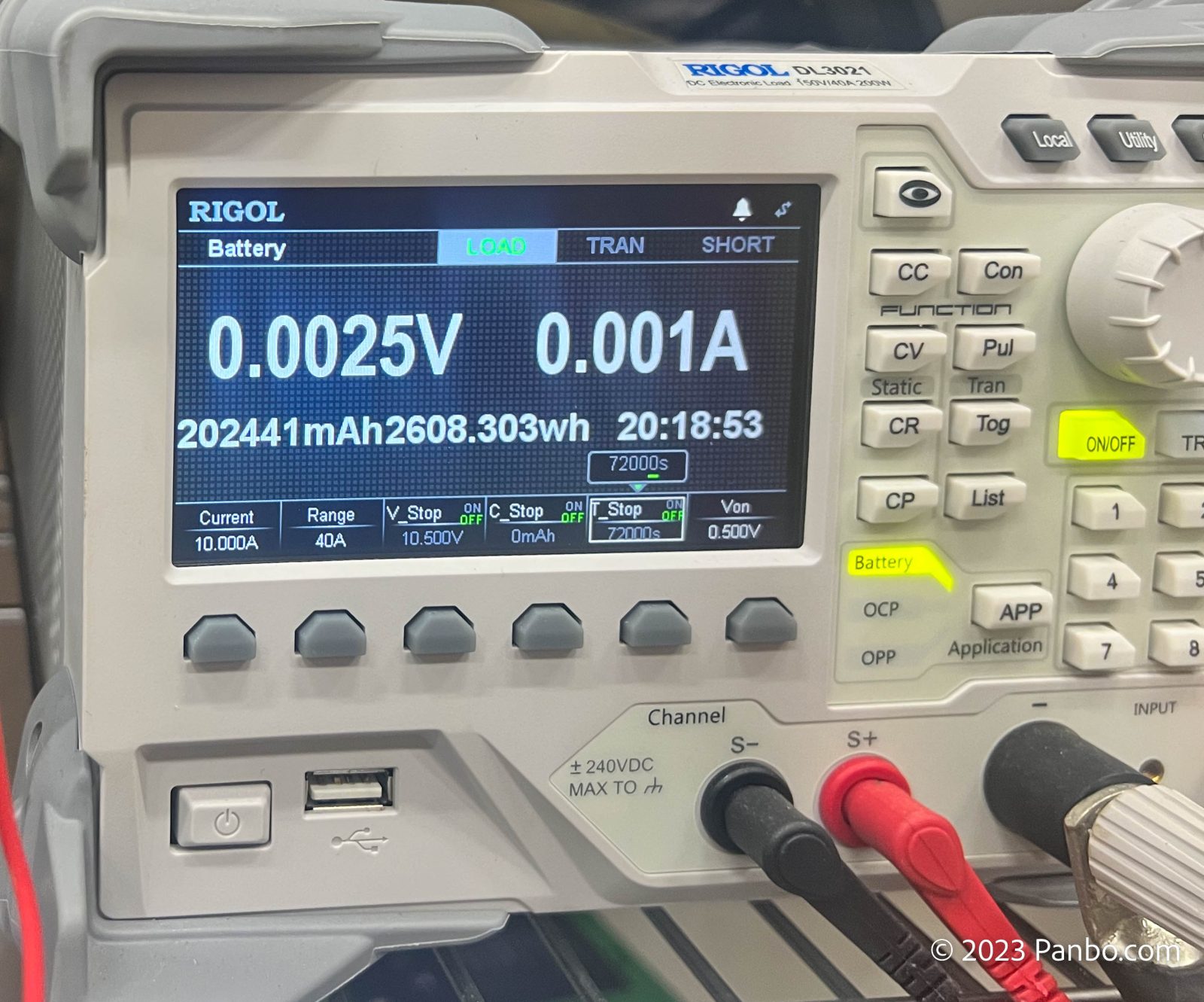
Batteries should fade into the background and simply work. Fortunately, that’s what my test battery did under testing. It provided power when needed. Like most LiFePO4 batteries I’ve tested, it delivered a few amp hours above its rated capacity. It also held steady voltage throughout the rundown test until the very end, when the discharge knee was reached and voltage fell rapidly.

The chart above shows the results of that run-down test performed with 10-amps of load. This test lasted just over 20 hours and produced a capacity of 202.4 amp-hours. You’ve probably heard me say before it’s common for brand-new lead-acid batteries not to yield their rated capacity. This battery, like most of the LFP batteries I’ve tested, outperforms its rated capacity. I perform a run-down test when I first receive the battery as well when I’m done abusing it with my various tests. Although I’ve only run the battery through about 10 cycles, I did abuse it with very high discharges, and it still produces the same capacity it did right out of the box.
Temperature protection
I tested for both high and low-temperature cutoff functionality. Based on a visual inspection of the temperature sensor, I suspected there wouldn’t be any low-temperature protection. Indeed, I cooled the temperature probe off to a temperature well below zero degrees Fahrenheit and didn’t trigger a disconnect event while charging. While discharging the battery, I heated the temperature sensor to around 250 degrees Fahrenheit. The BMS quickly disconnected the load until the sensor came down below 200 degrees. I then went back and checked the specs again and now see that no claims of low-temperature shutdowns are made for this battery.
Battery teardown
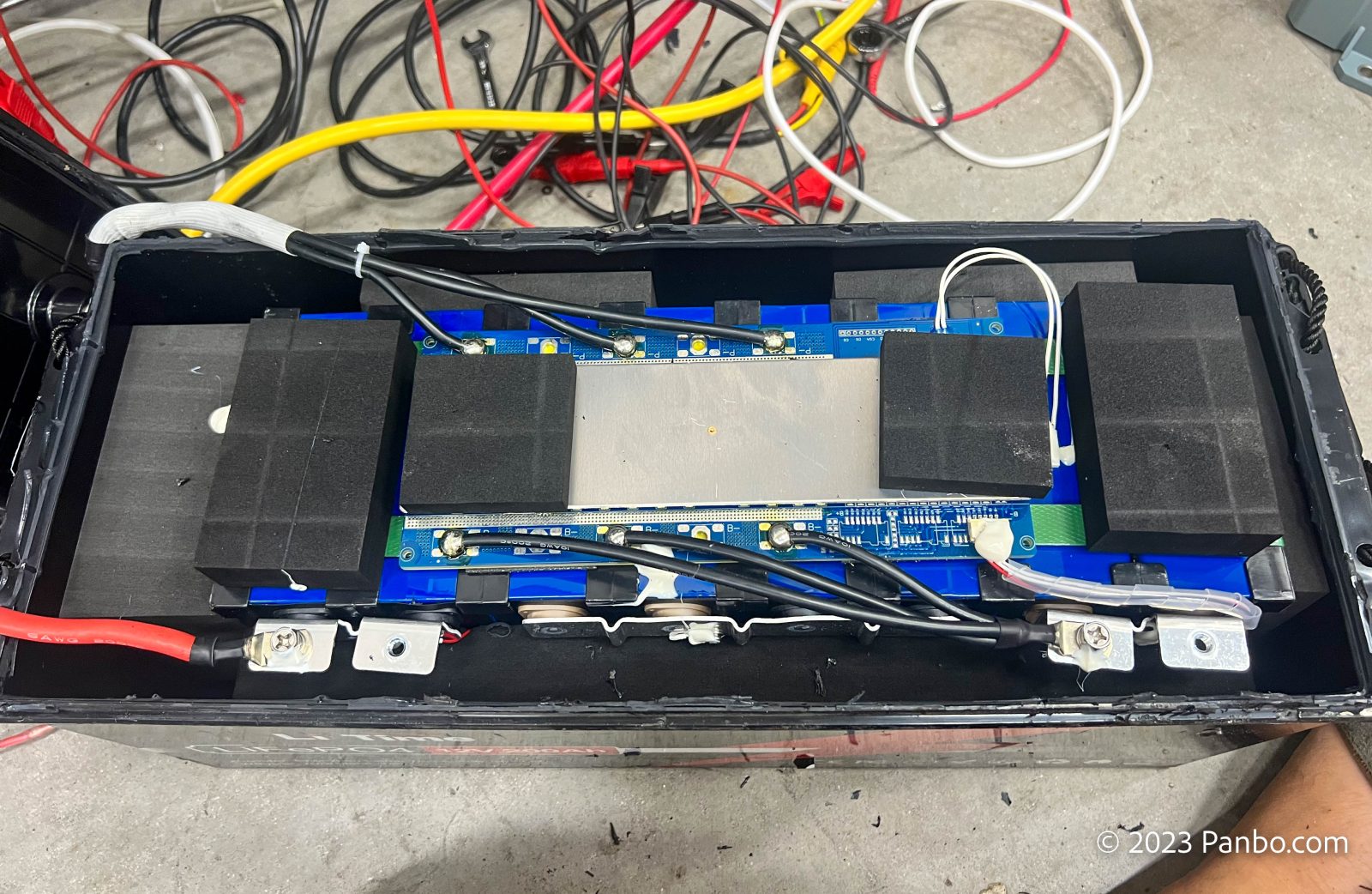
Physically, opening this battery was on the tougher end of the scale. The battery comes in a plastic case that is glued together. I used putty knives, screwdrivers, and pry bars to make my way into the case. I’d attribute the more difficult-to-access case to price, but the Lithium Pros battery I reviewed is among the most expensive and had the most difficult case to open.
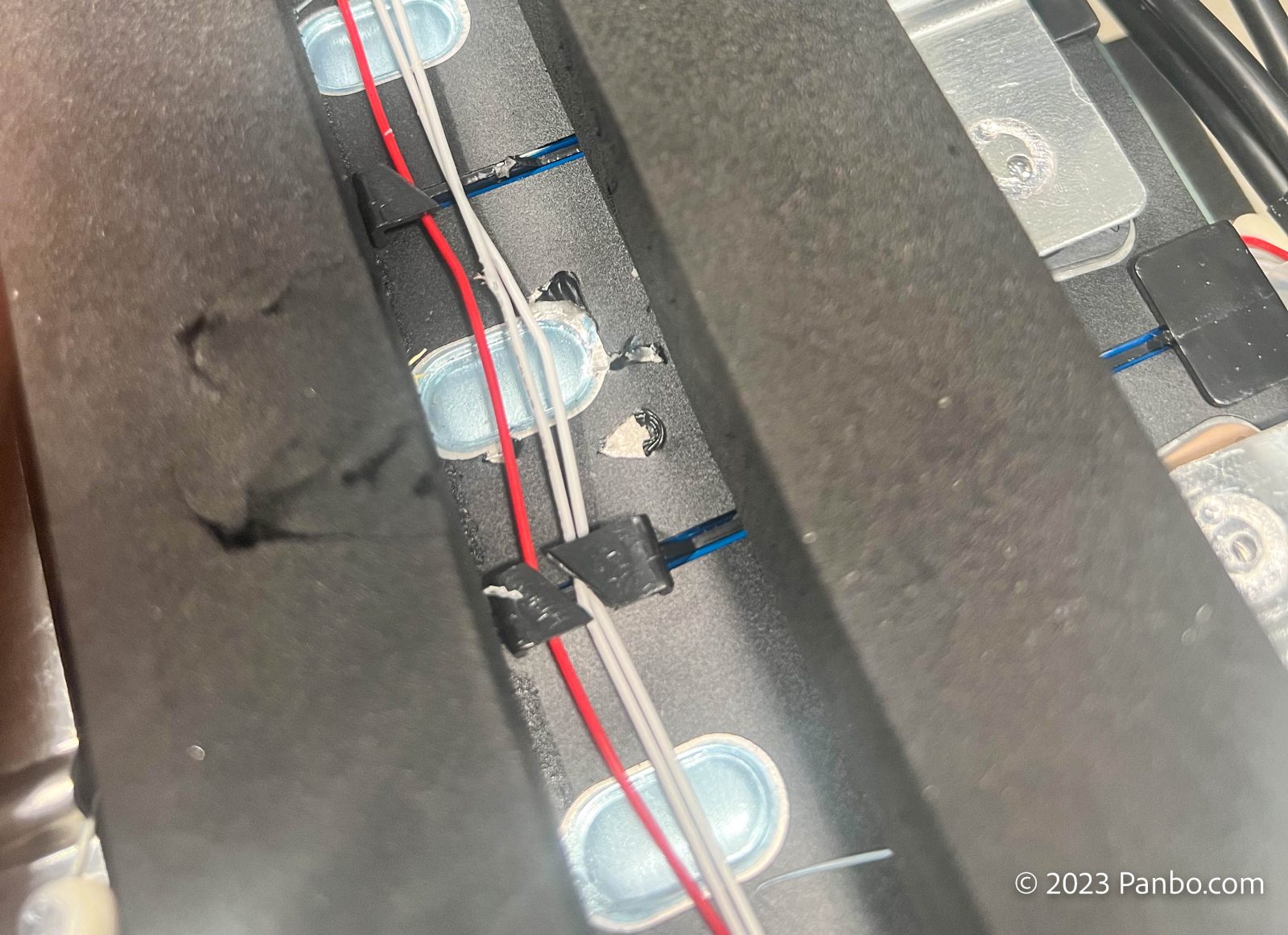
Once I got the case open, the next challenge was getting the battery out. Li Time uses high-density foam to hold the pack and BMS in place. Let me tell you that foam does a good job of holding everything in place. Such a good job, in fact, that I had to pry hard against the foam to get it out. I got lucky and didn’t end up damaging the battery prying it out, though I did scratch one area.
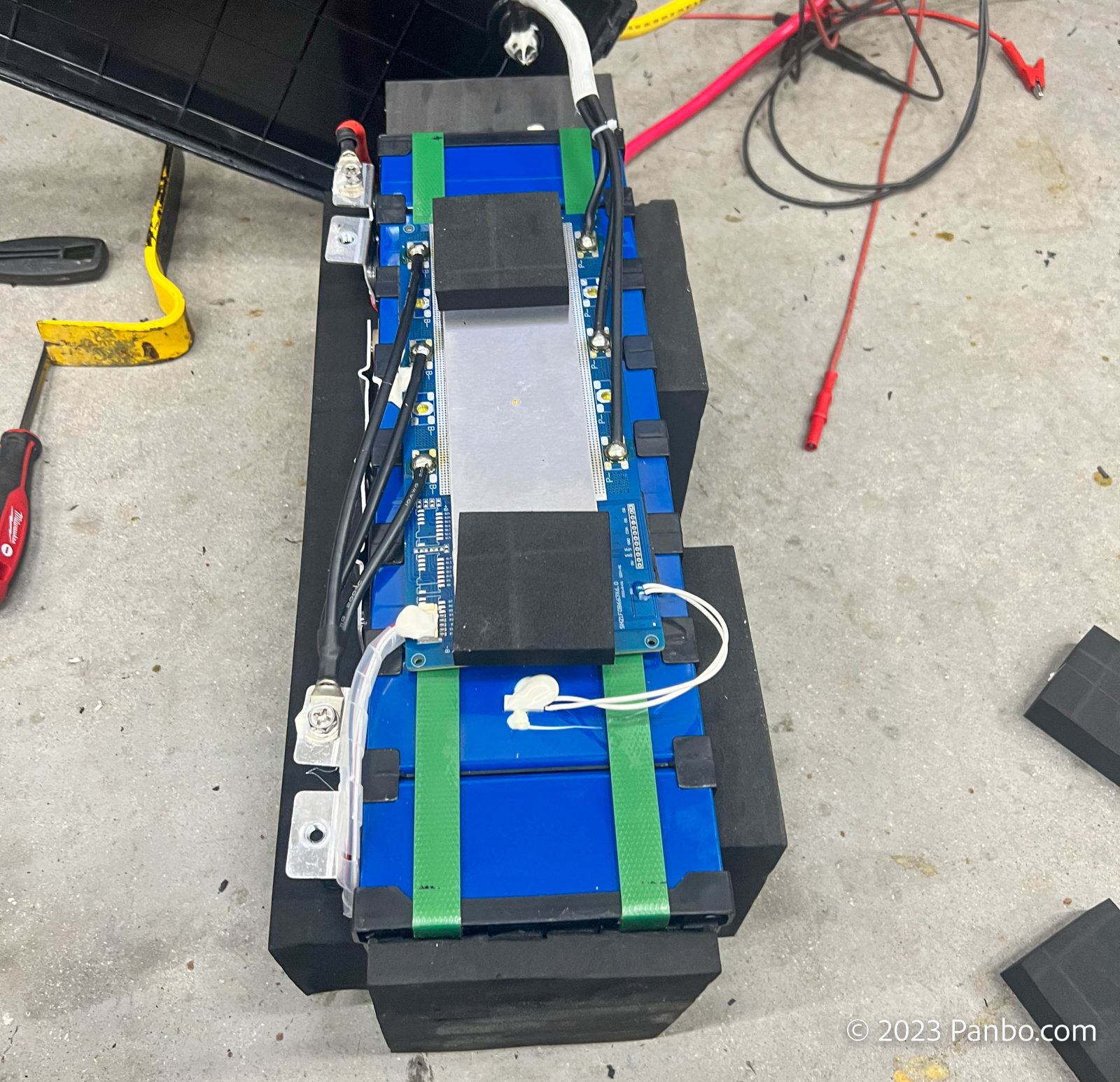
Overall, the construction of the battery is pretty good. I’m not a big fan of the extensive use of foam rather than positive anchor points in the case, but I suspect it’s a lot more cost-effective. I do worry that the foam may serve to hold heat close to the BMS. There are plastic end pieces and nylon strapping. I’m not sure these are strong enough to hold cell compression.
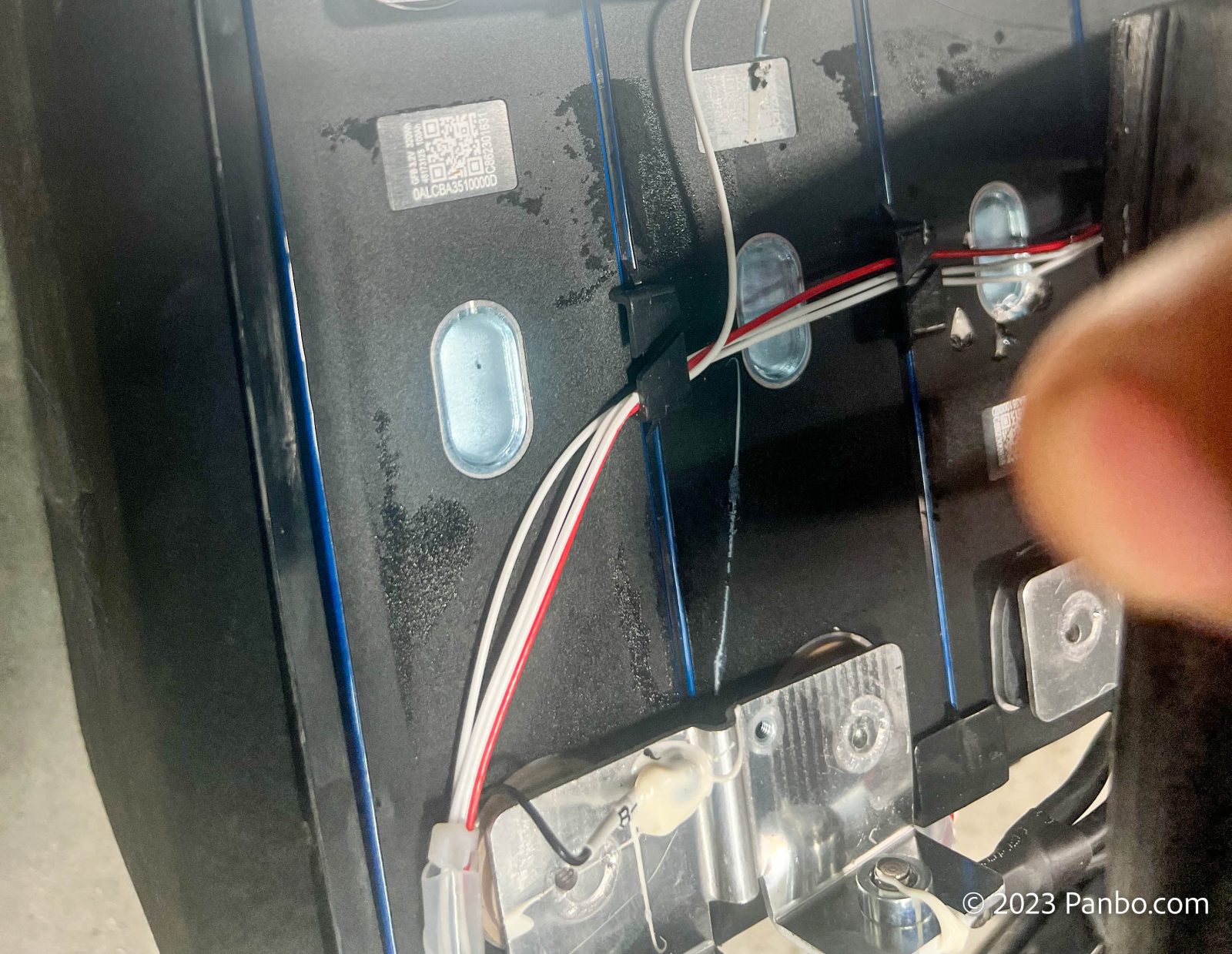
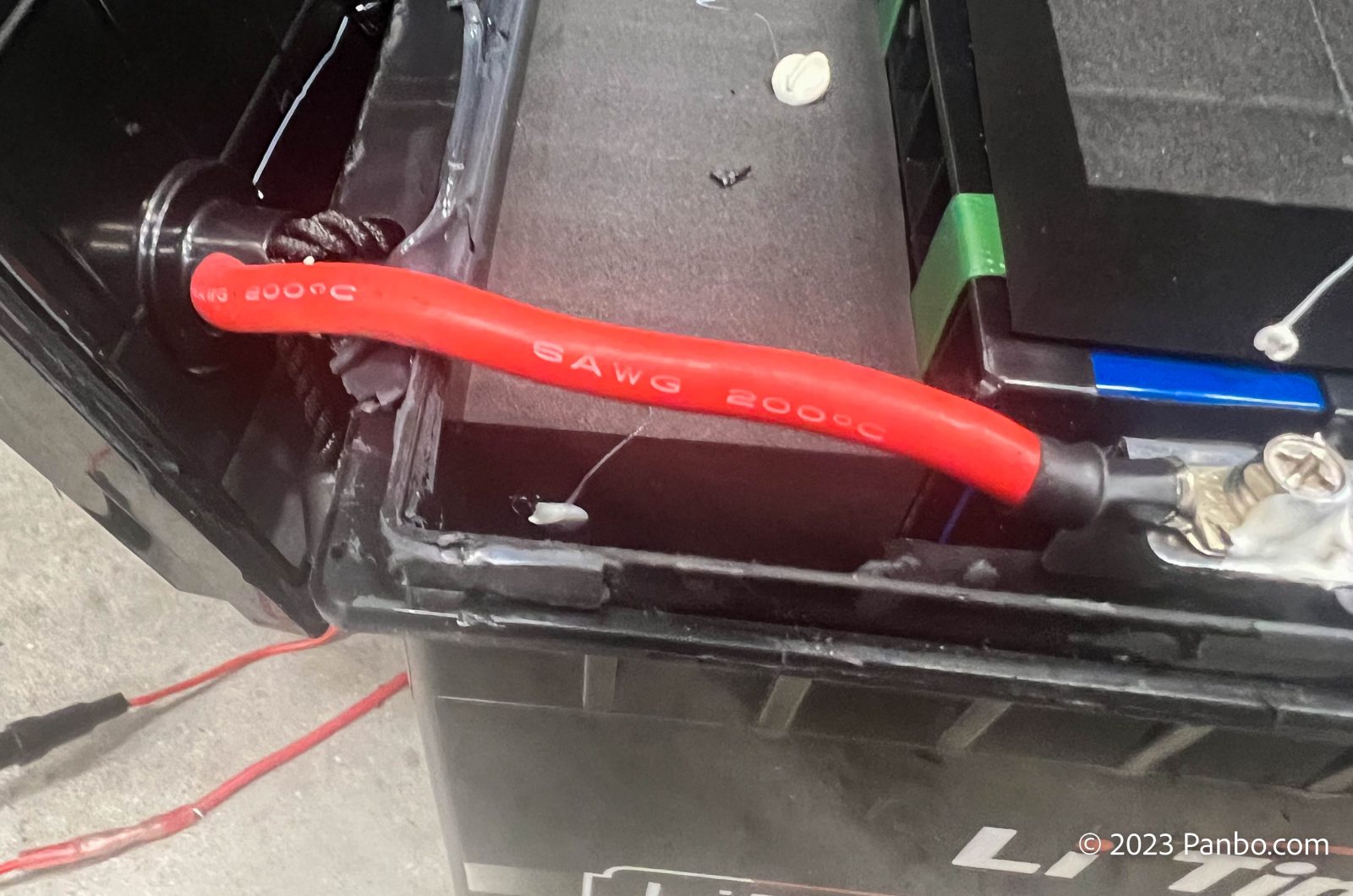
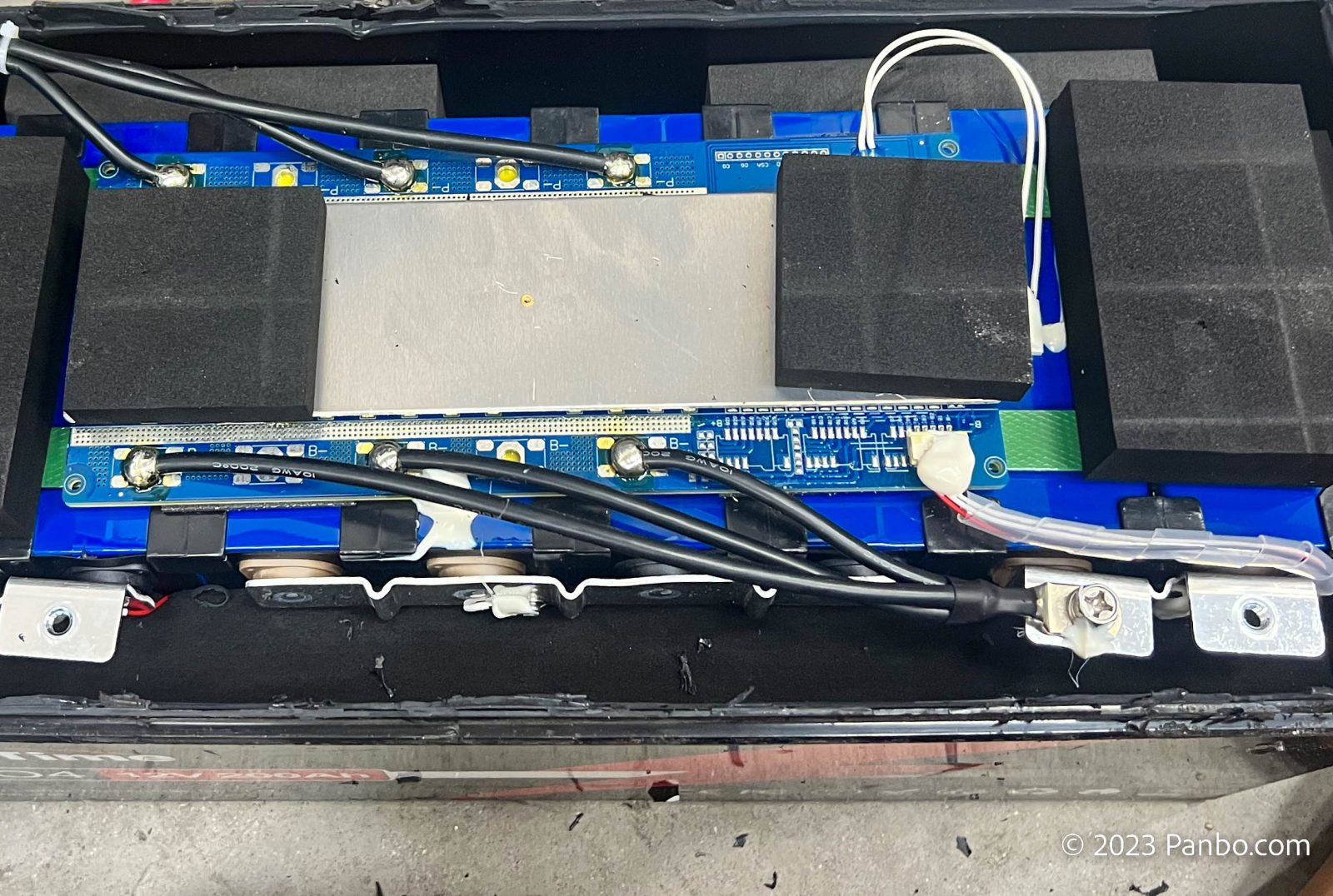
The 200 amp-hour battery is constructed of 8 100 amp-hour cells in a 4-series, 2-parallel configuration. Bus bars are laser welded to the cells’ posts. 200-degree Celsius 6 AWG wire is used from the positive bus bar to the positive post. A total of three 10 AWG wires are used to connect the battery pack negative to the BMS. On the bus bar side, the connection is made via a screw terminal. The wires are then soldered to pads on the BMS. I understand that’s likely the most cost-effective but I’ve also seen those soldered joints be a failure point.
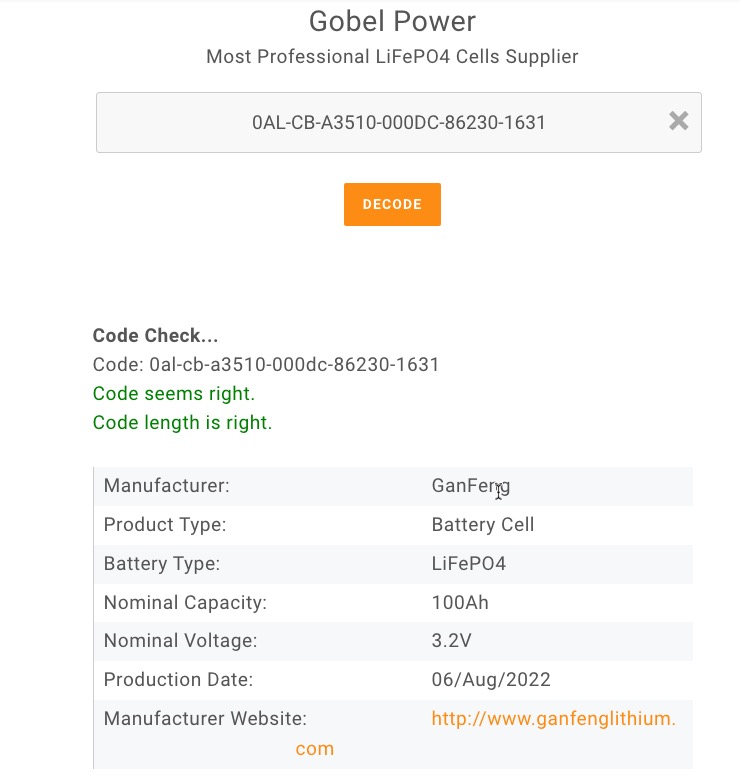
I was pleased to see unobscured QR codes and even more pleased to decode them and find recently built cells. I received my battery in January. So factoring in transit time by ship, it seems these cells didn’t sit around very long between manufacture and assembly.
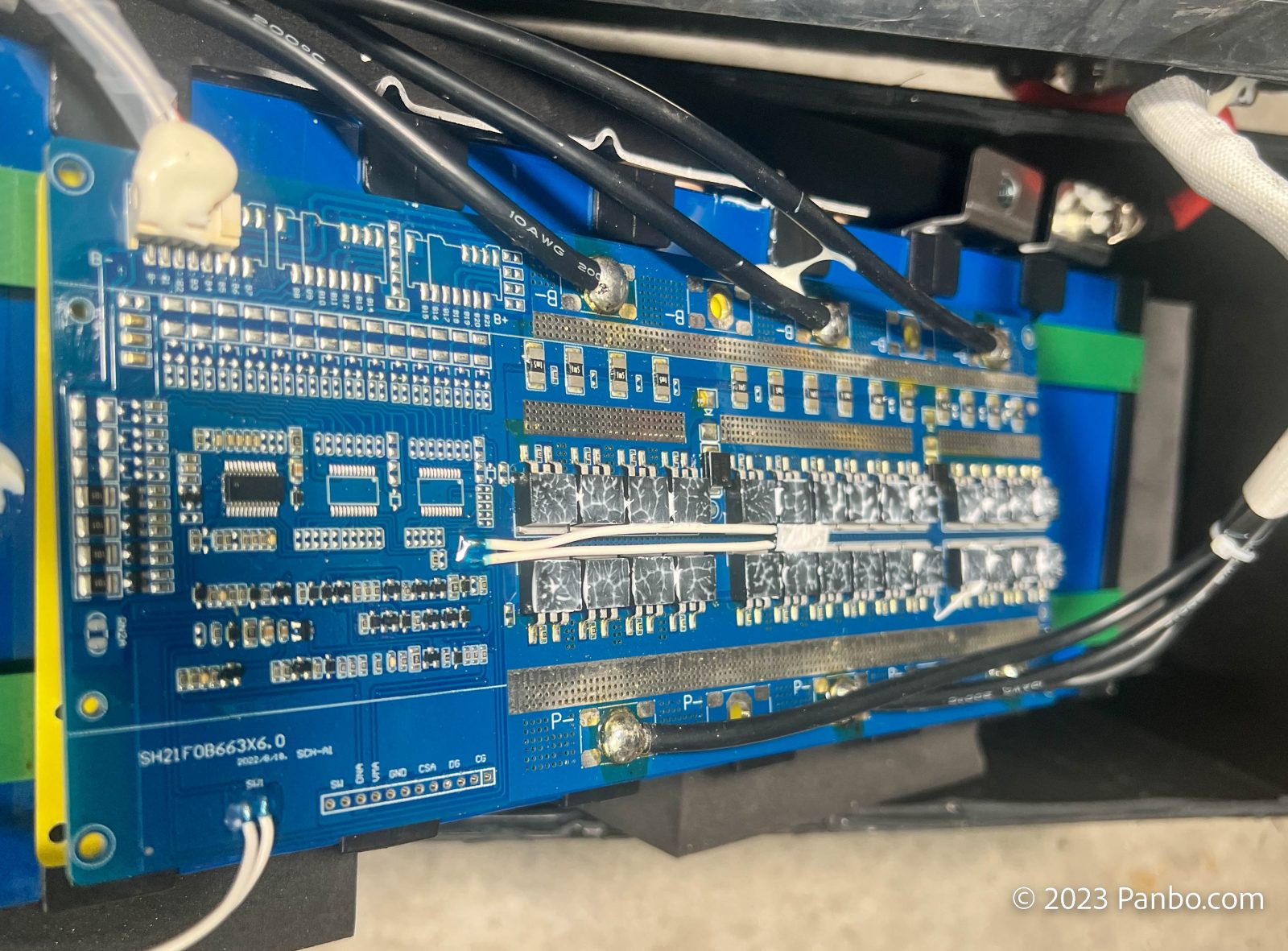
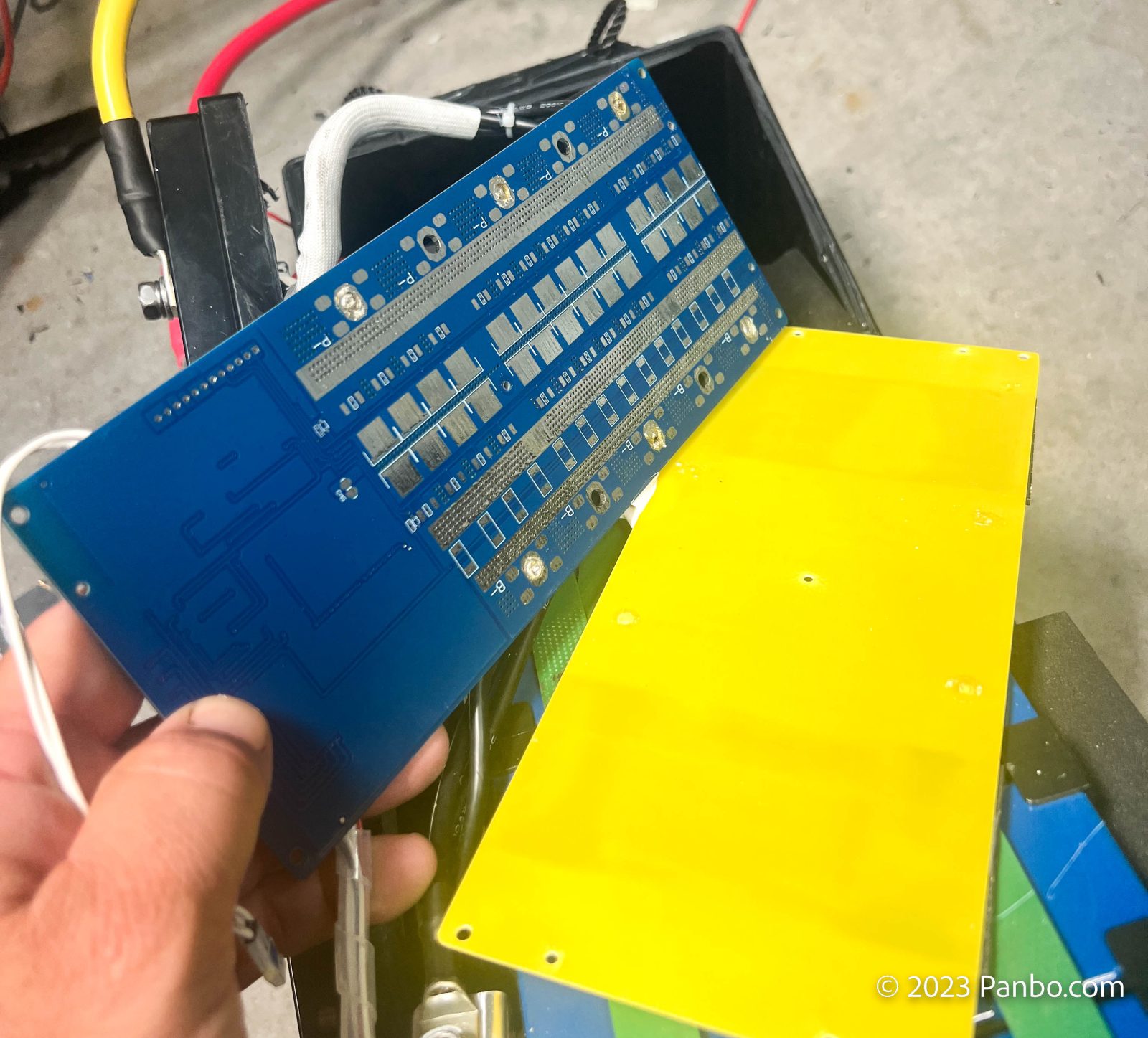
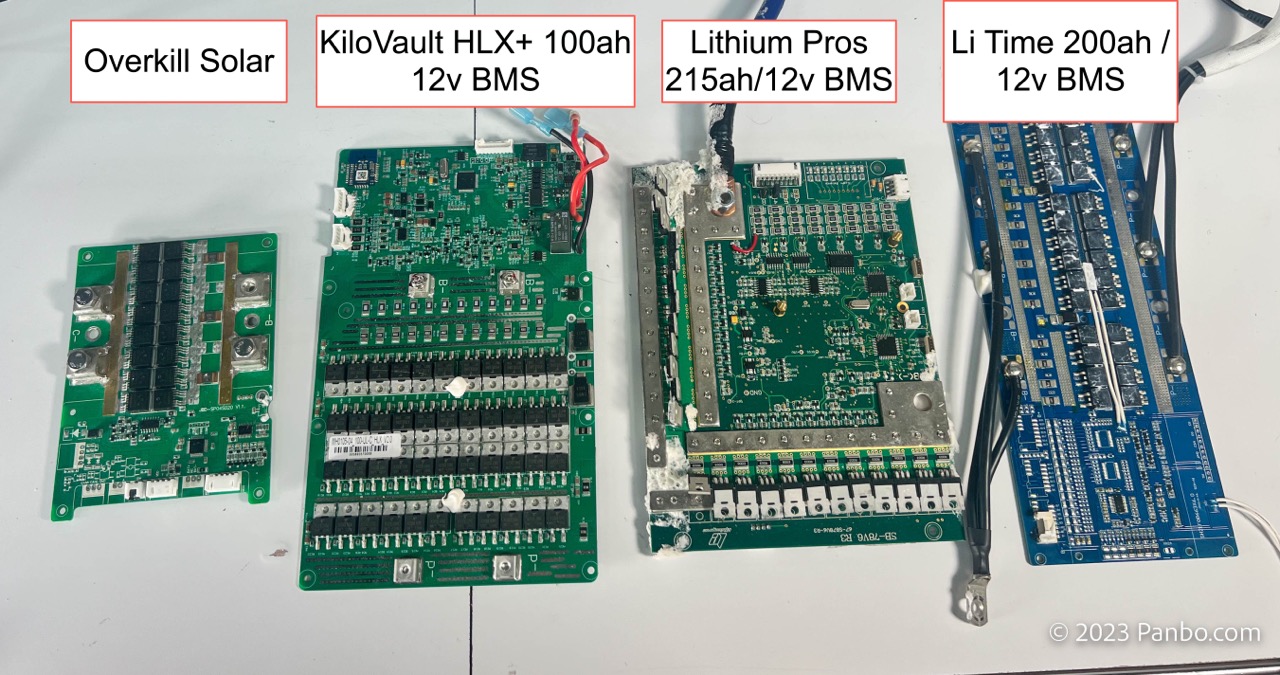
I have to admit; I was expecting less from the BMS. Although no-frills, what I found when I pulled the heat sink off the BMS was a decently sized unit. The BMS has a total of 28 FETs, though I wasn’t able to read specifics on them. Upon initial disassembly, I only found one temperature sensor on top of a cell in the pack. But, once I pulled off the heat sink, I found a second sensor nestled in between the FETs. This sensor seems to cause a disconnect around 260 degrees Fahrenheit.
Thermal results
To see how the BMS, and the rest of the battery, stands up to large loads, I applied steady loads of 75, 95, and 175 amps. Note, the battery is rated to 100 amps of continuous load and 200 amps of load for up to 5 seconds. I subjected it to a load well over 100 amps for much more than 5 seconds.
75 amp test
The first test was with a 75 amp load. The ambient temperature in my shop is around 75 degrees Fahrenheit. The hottest of the FETs reached 132 F. I didn’t find any other components gained more than a couple of degrees.
95 amp test
The second test brought the load up to 95 amps. The battery is now putting out just below full-rated capacity. The temperature climbed fairly quickly to 155-156 degrees Fahrenheit and stabilized. I let the load run for quite a while and saw no further temperature fluctuation.
During this test, I noticed a significant separation in the temperatures of the positive and negative terminals on the pack’s bus bars. As you can see in the images above, the negative terminal, under a 95amp discharge is reaching over 220 degrees. I have been further inside of the battery than Li Time ever intended and I may have caused an issue in this connection. But, the glue LiTime puts on the terminal was still intact when these images were taken.
As I reviewed the images, I noticed just how hot the temperatures had reached. Temperatures that high have the potential to cause real issues. At this point, I’d already taken the connections apart to remove the BMS. I’d also put the battery back together but hadn’t paid careful attention to these connections. So, I grabbed a 10mm (insulated) spanner and snugged up both connections. Now, I put a load of over 150 amps through the battery and was pleased to see the temperatures you see above. Nothing over 90 degrees at the terminal. The wire is hotter than the terminal. I strongly suspect it was my own manipulation of the battery outside of the case that caused the issue.
175 amp test
My final test was just to understand how well the battery stands up to loads way past its rating. I found out that at 175 amps of load, it takes about three minutes for the FETs to get hot enough for that temperature sensor to shut things down. That seems like an entirely acceptable performance to me. I also did a little more experimenting and found the battery would run on a sustained basis at 150 amps. Admittedly, that’s with the top off the case, which might help with cooling. But that’s a full 50 percent beyond ratings and seems pretty good to me.
Concluding thoughts
I think it’s important to use the same yardstick to measure and compare a battery that costs $0.25 per kilowatt hour to one that costs double or triple that. Objectively, this battery does what the manufacturer claims and does it with a no fuss and no drama. It also does it with fewer features, not as many safety measures, and possibly a little less “elegance” (to pick on my own title from my last battery review). But I think the big question is, do these batteries have a place in the marketplace? Undoubtedly, I think they do.
I’ve actually just spec’ed Li Time batteries for a project I’m working on. That project calls for huge energy storage, but, peak loads will be relatively small. These batteries are very well suited to that kind of work. In fact, the budget of the project simply wouldn’t have worked if not for an affordable LiFePO4 battery. And that’s just what these are, decent performance at an affordable price.


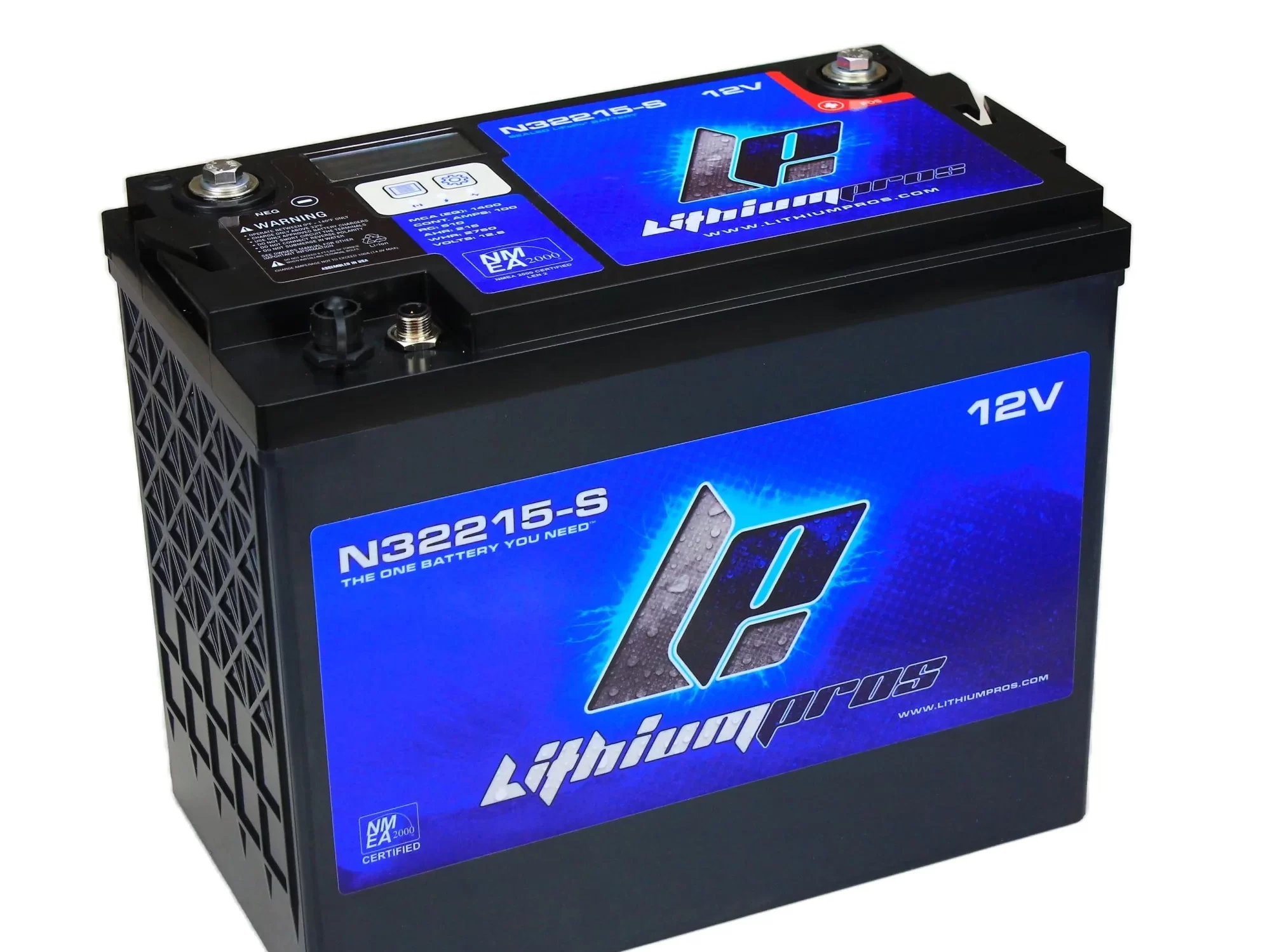
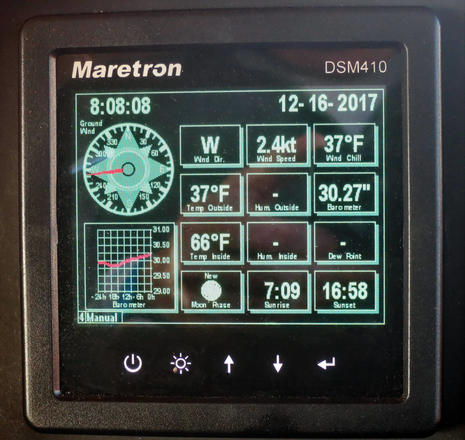

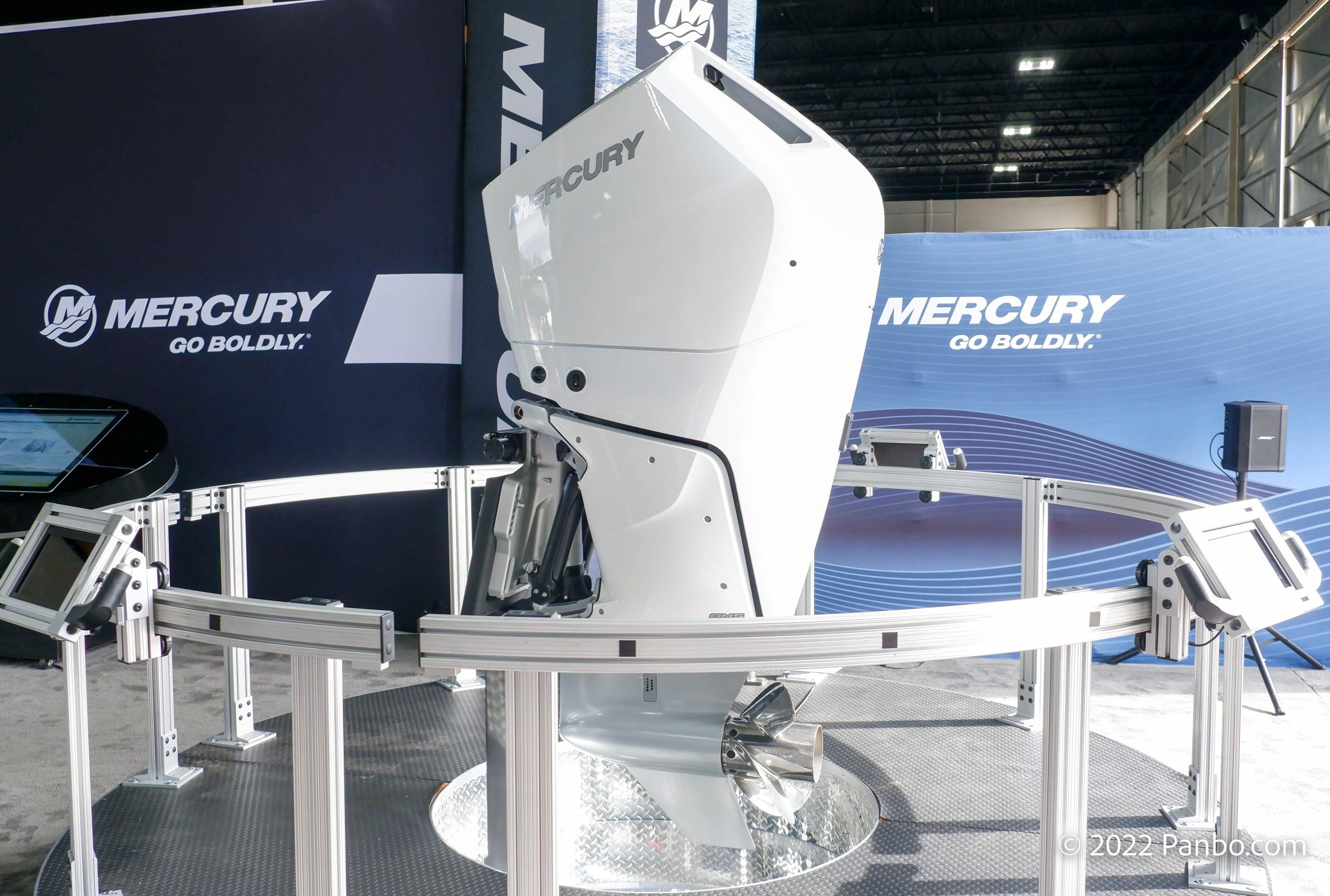






These look very promising. I’d love to go this route, but unfortunately my boat is wired such that The two separate banks provide both load and starting to their respective engines. As I understand it, these cannot be used for starting purposes. Have I got that right?
Bob,
You’re correct that these, and most LiFePO4, batteries aren’t designed for engine starting duties. We are beginning to see engine start rated LiFePO4 batteries hit the market. Like the early LiFePO4 batteries, it’s kind of the wild west. Some of those batteries appear to have carefully designed BMSes or even supercapacitors, while others seem to be the same battery with start slapped on the side.
However, it may not be as hard as you think to separate house and start duties. You could then leave your starting duties to lead-acid and move house to LiFePO4. The difficulty really comes from how the loads are connected to distribution.
-Ben S.
Great review as usual, Ben, and an interesting option. Thank you for your detailed and (I’m sure) time-consuming research. The LiFePo landscape continues becoming more diverse and appealing!
Nice to see a review of LFP battery at this price point. With the inherent safety of LFP cells and now the decent quality of a typical BMS this seems like an excellent option for the average cruiser. Having multiple batteries (separately fused?) should help reliability issues along with a lead starter battery/bank that can be used for emergencies.
As with any conversion to LFP the charging side has to be addressed and there are several ways to do that which also vary in cost/complexity/ease of use. Though I was able to setup my LFP/lead system with out any of the following devices a typical system might include a B2B charger, alternator protection device (if charging LFP directly), alternator regulator that monitors the alternator temperature. Also a shore charger that isn’t set to float, or not set to float above 13.4v.
I just considered the Li Time battery but settled on 300 ah batteries from LPFMax because of its Bluetooth and low temp heaters and priced at about $1k each. This is somewhat of a risk as I could not find a significant number of reviews and I can’t afford to take a battery apart to see how it is built but the price is incredibly attractive with lots of features found in higher end batteries. Additional cost of install is b-b charger that allows control of load on alternators and upgrades to Magnum inverter charger for support of Lithium batteries, about $600.
I have nearly this same battery. In 2021 I had my boat set up for the switch to LiFePO4 batteries and was just waiting for 750Ah bank of golf cart batteries to die. I didn’t know their age and so didn’t want to dump them prematurely. And also was watching the LiFePO4 offerings evolve rapidly. Wouldn’t you know it, they died just days before we were set to go cruising that summer. In an effort to “save the cruise”, I ordered a Ampere Time 12V 200Ah Plus (200A BMS) from Amazon for $880 and had it in 3 days! Nobody else could deliver so quickly. Dropped it in, changed the settings on the Wakespeed WS500 and it has been working great ever since that June 2021. I have pulled more than 210Ah out of it on a couple of occasions as measured by a Victron SmartShut. I’m just one data point, but a satisfied customer.
So yes, a very good value from LiTime at $630 (for the 100A BMS version).
On the LiTime website, I see that they are starting to offer batteries with more features on some batteries such as low temp cutoff and internal heating, etc. All good options that will hopefully migrate throughout the product line.
I’d like to see a little better engineering but I have to say that at this price point what you are getting seems pretty darn good.
Would four of the 12v 200ah = 48v system on my polaris ranger EV be a good choice to replace my 8 lead acid batteries. I’d also like the self heated battery since I’m using it in Wisconsin yr round . ?
Wow
Hello Ben,
Do you know any of the details regarding cell balancing on this battery? Is it active or passive? Does the BMS handle the transition from CC to CV charging?
Thanks
Hi Lewis,
The balancing is passive. I haven’t been able to find ratings for the amount of passive balancing the BMS can do.
I don’t believe any of the BMSes handle the transition from constant current to constant voltage. Instead, that’s determined by the battery pack’s charge acceptance. The BMS can stop charging, but it doesn’t limit current or change the voltage of the charge energy.
-Ben S.
Thank you
wakespeed has a concern regarding drop in lIFepO4 batteries that use BMS’s that do rapid disconnects at the end of their charge cycle. Do these 200+ show that behaviour ?I.E would a wakespeed WS500 not work charging these directly ? ( I want to make use of the high DOC and not run the WS to a FLA starter battery – B2B for instance>
“…In many cases, these drop in batteries use disconnects as a normal part of charge control. Unfortunately, these batteries make it impossible to anticipate disconnects because of the lack of suitable forewarning. “
I ordered a Weize 300 ah lifepo4 from Amazon for $1099. It claimed a smart shunt and 10 year warranty with a California location. I took a chance but figured I’d be dealing with Amazon.
It arrived a few days later with a very slim manual that said 5 year warranty, or maybe 2 year warranty. The “smart BMS” had no bluetooth or anyway of knowing what was happening inside the sealed box. Nobody ever answered the phone in California about warranty or any other questions and the email responses from China seemed canned and ultimately useless.
Returning it was a hassle because Weize is a “3rd party seller” but eventually I did get it all done and Amazon paid the return shipping.
In its place I ordered a pre assembled 300 AH Sun Fun Kits battery from the folks in Baton Rouge. It cost a few hundred dollars more but customer service, the substantial manual and testing documents, and visibly robust build quality are well worth the price differential in my opinion.
It is working out great, I’m surprised how much better and different it is from lead acid. I now watch my recharging for fun instead of worrying about running low on power.
Thanks, Denis. SFK — https://www.sunfunkits.com/ — is an impressive operation and I particularly like their emphasis on transparent pre-testing and repairability.
Also, if I have Ben Stein’s math right, your self-heating 300Ah SFK at $1,645 — or $0.51 per usable watt hour — beats all the other LiFePO4 batteries on his list… except for the various Li Time models. But it also has what looks like comprehensive Bluetooth app access to the BMS.
Well played, sir.
I almost jumped on this after 3 recent premature 4D battery failures (shorted cell) on a flooded deep cycle model from a major US brand. But I was concerned about BMS cutoff with the LiFePo4, and asked Li Time: “When charging a L12V200-100-Basic-8-A160, do I risk the onboard BMS disconnecting the battery while my Balmar high output alternator and 614 programmable regulator are delivering high current? (poof!) I can otherwise likely program the 614 regulator to work for LiFePo4, but must I replace the shoreside charger? (30A, 3 stage for lead/acid) ” Their reply was not reassuring: “Thanks for your contact. To charge our 12V 200Ah LiFePO4 battery, we recommend the battery charger that supports lithium iron phosphate (LiFePO4) battery charging, DC charging current should be lower than 100A, and the DC charging voltage should be between 14.2V to 14.6V. Please kindly confirm whether your regulator can meet these three requirements. If yes, that will not be a problem. We do not recommend using lead-acid battery charger to charge the LiFePO4 battery, that may affect the lifetime and performance of the LiFePO4 battery. We hope this information will be helpful for you. Have a nice day. ”
There was no mention of the BMS issue, which was the major concern. And it turns out that a constant voltage/current shoreside charger for the LiFePo4 is quite inexpensive. Browsing about, for the BMS issue, it appears that people are having success with leaving a lead acid in parallel (yes, in parallel) with a new LIFePo4 battery with good results – and the lead acid battery protects the charging system from a BMS cutoff. I guess I’m just not adventurous any more, but today I got two new 4D AGM lead acid batteries to hopefully put my flooded cell problem behind. I’ll check this all again in 5 years.
I am about to install these batteries in my boat. I would prefer to run bow thruster directly from the LifePo bank, but have been just been told that this might be a problem given the fact that the BMS in these batteries is FET based rather than contractor based. Is this truly an issue I should worry about?
Tristan,
The concern and the reason for the recommendation against using these batteries in thruster and windlass duty is the inrush of your thruster. Do you have a meter that can measure inrush? Armed with that information, you could probably make a better determination. FET based BMSes don’t like to see inrush dramatically over their rated current handling capabilities. It can significantly shorten their lives.
-Ben S.
Thank you Ben. I do have a meter and will check the inrush current. Is the same an issue with a BT contactor based BMS? I have the option of returning these batteries and buying something different.
Low temperature charging protection?
You have to be extremely careful when hooking a battery in parallel with a battery that contains an internal BMS. Some BMS that trip off are switched back on by applying an external voltage. If you connect a lead acid battery in parallel with such a BMS-controlled battery, you could end up in an oscillating fault condition. In a visit to the IBEX floor in the fall of 2023, I saw at least 4 brands of LFP batteries that used this strategy. Unfortunately, battery manufacturers do not provide much information on the details of their BMS.
I was shipped a defective LiTime battery and despite my requesting some detail on the BMS, they sent nothing useful. Worse, I ended up stuck with the defective battery. Details here
https://francesovni435.blogspot.com/
I took a look at your blog. It looks like you perhaps ordered two batteries and had them shipped in the U.S. to a freight forwarder who then shipped them to you? If so, it doesn’t seem unreasonable that you’d need to get them back to the country where they were delivered. I recognize this is a difficult and expense for you. But, if my understanding is correct, LiTime probably shouldn’t be on the hook for where the batteries are moved after delivery.
-Ben S.
Sharing my own experience with Litime. Not good. https://francesovni435.blogspot.com/
Agreed, and I don’t expect them to pay the incremental freight. they have acknowledged that the product was defective, and It would seem reasonable to me to waive the requirement of the return of the defective product under the circumstances. I had proposed this and acknowledged that I was willing to pay the freight from Miami to curacao (again). (Reasonable, as you suggest)
I have had other suppliers make shipping errors resulting in a similar situation, and they did the right and sensible thing, and provided the product I paid for, without attempting to force me to return the other material at my expense. Not so with LiTime.